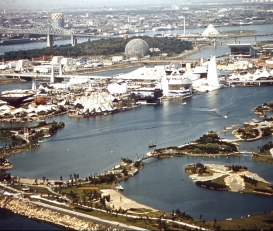As a young landscape architect, Otis Bishopric practiced in Cincinnati, Ohio, but when World War II broke out in 1939, he returned to Canada to enlist in the Royal Canadian Air Force. With his LA expertise, he served as an accomplished camouflage expert until the war ended.
In 1945, like many returning servicemen, he continued to serve his country in the civil service, joining Canada’s Department of Public Works. For many years, he was the only landscape architect working for the government. (Ned Wood (link TO COME) was with the Federal District Commission, now the NCC.) Because his profession was virtually unknown, he created his own position as Chief of Landscape Architecture. Clive Justice, who became his assistant in the summer of 1950, remembers that “he did this quietly and unassumingly… because that was his manner and way.”
In the post-war years, the federal government launched a large building program, constructing Veterans’ hospitals (such as Sunnybrook), customs offices, post offices, and classic buildings (such as 22 Sussex Drive). Although few understood the LA’s role, Bishopric earned wide respect from architects and engineers. “Many times,” wrote Justice, Bishopric quietly saved the face of the Department, by sensitively “correcting and turning to advantage some of the most inept and monumental blunders in siting and site development it was possible to imagine.”
Bishopric’s landmark work, Justice believes, deepened our appreciation of the Canadian landscape. For the 1958 Brussels World’s Fair, for example, he created a Canadian Pavilion that was a subtle, quiet and beautiful interpretation of the tundra’s textures, forms and colours.
Bishopric moved to Parks Branch (rechristened Parks Canada) as it forged forward-thinking new policies, and established a raft of new national parks. New and existing parks were rigorously planned by increasingly professional teams of biologists, geographers, geologists, foresters and LAs.
The new Parks Policy, which stressed that parklands should remain unimpaired for future generations, came into force in 1964 as Bishopric retired, but he remained a critical force as virtually every firm in Montreal prepared for Expo 67. Bishopric worked in consortium with Donald W. Graham and Associates and Georges Daudelin to lay out the southwestern sector of Île Notre Dame, the primary greenspace for Man and His World, creating an extensive network of lakes and ponds, wooded glades and hills. He was elected a Lifetime CSLA member in 1969.
Photo Credit:
1. Aerial view of Île Notre Dame (foreground), Expo 67, July 1967. Photo by Andrew Hoffman. (Courtesy Ron Williams)
Sources:
“An Appreciation of Otis Bishopric, Landscape Architect, Gentleman and Gentle Man,” by Clive L. Justice. University of Guelph Archives and Special Collections - CSLA Membership List
Landscape Architecture in Canada, by Ron Williams. McGill-Queen’s University Press, 2014.
